Paul Rodden • Season: 2025 • Episode: 394
Listen Now:
>Direct Link To The Hydrogen Podcast MP3<
Listen On Your Favorite App:
Welcome to The Hydrogen Podcast!
🚨 The hydrogen industry is shifting—Air Liquide scales back its U.S. hydrogen hub participation, Hyzon Motors shuts down, and BMW steps in with its first hydrogen-powered truck. What does this mean for the future of hydrogen infrastructure and heavy-duty transportation? 🚛💨
In this episode of The Hydrogen Podcast, I break down: 🔹 Why Air Liquide is reducing its involvement from six hydrogen hubs to two
🔹 The impact of President Trump’s freeze on federal clean energy funding
🔹 The economic and strategic reasons behind Air Liquide’s shift
🔹 Hyzon Motors’ U.S. shutdown—what went wrong?
🔹 BMW’s new hydrogen-powered truck and why it signals growth in hydrogen trucking
🔹 The future of hydrogen infrastructure and fuel cell vehicles
Despite setbacks, hydrogen trucking is still moving forward with major industry players stepping in. Tune in for the latest insights!
🎧 Listen & Subscribe:
📌 Apple Podcasts | Spotify | Google Podcasts | YouTube
📩 Have feedback? Email me at: info@thehydrogenpodcast.com
👉 Want to stay updated on hydrogen news? Subscribe to the podcast and hit the notification bell! 🔔
#Hydrogen #AirLiquide #Hyzon #BMW #HydrogenTrucks #Nikola #EnergyTransition #CleanEnergy #FuelCells #HydrogenEconomy #HydrogenInfrastructure #EV #Class8Trucks #HydrogenFuel #GreenHydrogen
Thank you for listening and I hope you enjoy the podcast. Please feel free to email me at info@thehydrogenpodcast.com with any questions. Also, if you wouldn’t mind subscribing to my podcast using your preferred platform… I would greatly appreciate it.
Respectfully,
Paul Rodden
VISIT THE HYDROGEN PODCAST WEBSITE
https://thehydrogenpodcast.com
CHECK OUT OUR BLOG
https://thehydrogenpodcast.com/blog/
WANT TO SPONSOR THE PODCAST?
Send us an email to: info@thehydrogenpodcast.com
NEW TO HYDROGEN AND NEED A QUICK INTRODUCTION?
Start Here: The 6 Main Colors of Hydrogen
Transcript:
Today, I’m going to examine a critical shift in the U.S. hydrogen industry and what it means for the future of hydrogen infrastructure and heavy-duty transportation.
Air Liquide recently announced that it would scale back its participation in the U.S. hydrogen hub initiative, reducing its involvement from six hubs to just two. This decision follows President Donald Trump’s move to freeze federal funding for clean energy projects, including the $7 billion Hydrogen Hub program. While this might seem like a setback, it’s actually a strategic shift that could accelerate hydrogen infrastructure deployment in a more controlled and sustainable manner.
At the same time, the hydrogen trucking industry has experienced major shakeups. Hyzon Motors, one of the key players in hydrogen fuel cell Class 8 trucks, has shut down its U.S. operations, and Nikola has filed for bankruptcy. However, despite these challenges, BMW has announced the launch of its first hydrogen truck in partnership with Paul Nutzfahrzeuge, showing that hydrogen-powered transportation is still progressing.
And so, I’ll break down why Air Liquide’s new approach makes economic sense, analyze Hyzon’s shutdown, and discuss why hydrogen trucking is still moving forward despite these market shifts. All of this on todays Hydrogen Podcast
To understand why Air Liquide’s decision is a calculated move, we need to look at the economic realities of hydrogen infrastructure development. Large-scale hydrogen hubs require massive capital investment, covering production, transportation, storage, and distribution networks. The original $7 billion federal hydrogen hub initiative was designed to de-risk these costs and encourage private-sector participation. However, with federal support now in question, companies must take a more cautious, market-driven approach.
Hydrogen production costs vary widely. Green hydrogen, produced via electrolysis from renewable energy, currently costs between $4 and $6 per kilogram. Blue hydrogen, made from natural gas with carbon capture, is more affordable, ranging from $1.50 to $2.50 per kilogram. Given these costs, it makes economic sense for companies to prioritize blue hydrogen in the near term to build out infrastructure while green hydrogen technology continues to mature.
McKinsey & Company’s research has shown that phased deployment strategies reduce cost uncertainties by up to 30%, allowing companies to refine operations before scaling. Air Liquide’s move to focus on just two hubs follows this model, ensuring that resources are allocated efficiently and that lessons learned can be applied to future expansions.
And then so why these two hubs? Air Liquide’s decision was based on cost competitiveness, industrial partnerships, and regulatory support. The two selected hubs are located in regions with strong natural gas resources and existing industrial hydrogen demand, making them ideal for blue hydrogen production.
One of these hubs is in Baytown, Texas, where Air Liquide is partnering with ExxonMobil. ExxonMobil has already committed significant investment to low-carbon hydrogen and ammonia production, making this a low-risk, high-reward location. Texas also has a favorable regulatory environment, offering tax incentives and streamlined permitting processes that make hydrogen infrastructure deployment faster and more cost-effective.
By focusing on these hubs, Air Liquide is ensuring that its investments yield long-term benefits while maintaining financial and operational flexibility.
But now lets talk about Hyzon and what it means for hydrogen trucking. Hyzon Motors was once considered one of the most promising companies in the hydrogen trucking sector. The company developed fuel cell-powered Class 8 trucks and aimed to provide a zero-emission alternative to diesel-powered freight transportation. However, earlier this month, Hyzon announced that it was shutting down its U.S. operations due to financial struggles, project delays, and an inability to scale production effectively.
One of the main reasons for Hyzon’s collapse was the challenge of transitioning from prototype development to mass production. While the company successfully built demonstration trucks and secured partnerships with fleet operators, it struggled with manufacturing scalability and the high costs associated with early-stage hydrogen truck production. Additionally, delays in refueling infrastructure expansion made adoption more difficult, reducing near-term demand for hydrogen trucks.
Hyzon’s exit from the U.S. market is a setback, but it does not signal the failure of hydrogen-powered freight transport. Instead, it highlights the challenges of being an early-stage company in a capital-intensive industry. The hydrogen truck market remains viable, as evidenced by continued investment from major players.
And so despite Hyzon’s shutdown and Nikola’s bankruptcy, the hydrogen trucking industry is still advancing. BMW recently announced the launch of its first hydrogen-powered truck in partnership with Paul Nutzfahrzeuge. Unlike many startups that have struggled with scaling production, BMW brings extensive experience in automotive manufacturing, giving it a significant advantage in bringing hydrogen trucks to market.
BMW’s hydrogen truck is designed for logistics operations and is part of the company’s broader strategy to decarbonize its supply chain. The company sees hydrogen as a complementary technology to battery-electric vehicles, particularly for long-haul trucking where refueling speed and vehicle weight are critical factors.
This development signals that established automakers are stepping in to drive hydrogen trucking forward, even as some startups struggle. While the road ahead won’t be without challenges, BMW’s involvement reinforces that hydrogen remains a viable solution for decarbonizing freight transport.
Returning to Air Liquide’s strategy, the decision to focus on two hubs instead of six presents several advantages. First, it allows the company to optimize logistics, supply chain management, and workforce development before expanding further. This measured approach improves cost control and ensures that infrastructure is deployed efficiently.
With fewer projects to manage, Air Liquide can bring these hubs online faster, accelerating the timeline for commercial hydrogen availability. Lessons learned from these initial deployments—such as refining production techniques, improving storage logistics, and optimizing distribution networks—can be applied to future expansions, making the overall scaling process more effective.
By taking a phased approach, Air Liquide is reducing risk while ensuring that its investments support long-term hydrogen adoption.
This shift toward market-driven investment in hydrogen infrastructure reflects a broader industry trend. With federal funding uncertain, private-sector companies must prove the commercial viability of hydrogen projects before committing to large-scale investments. Air Liquide’s strategy demonstrates that a targeted, phased approach is the most effective way to develop hydrogen infrastructure.
At the same time, the hydrogen trucking industry is undergoing a transformation. While the exit of Hyzon and Nikola’s financial struggles highlight the challenges of scaling new technologies, BMW’s entry into the market shows that hydrogen-powered freight transport is still moving forward. Established automotive manufacturers with deep technical expertise and financial resources will likely play a leading role in the next phase of hydrogen truck development.
Air Liquide’s decision to scale back its hydrogen hub participation is not a retreat—it is a strategic move that positions the company for long-term success. By prioritizing efficiency and scalability, this approach will ultimately accelerate the growth of hydrogen infrastructure in a sustainable manner.
At the same time, the hydrogen trucking industry remains resilient despite recent challenges. The setbacks of individual companies do not indicate the failure of hydrogen as a technology but rather a restructuring of the competitive landscape. As established players like BMW enter the market, the industry will continue to evolve, proving that hydrogen remains a key component of the clean transportation future.
Alright, that’s it for me, everyone. If you have a second, I would really appreciate it if you could leave a good review on whatever platform you listen to. Apple podcasts, Spotify, Google, YouTube, etc. That would be a tremendous help to the show. And as always if you ever have any feedback, you are welcome to email me directly at info@thehydrogepodcast.com. So until next time, keep your eyes up and honor one another.




